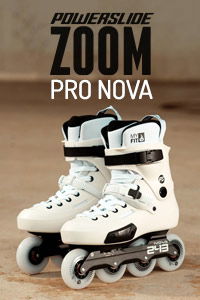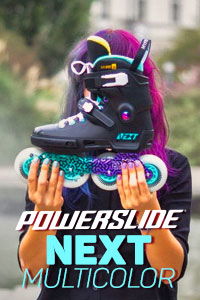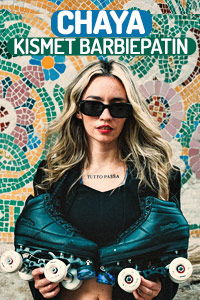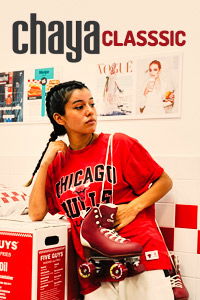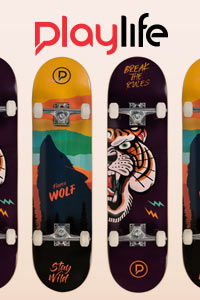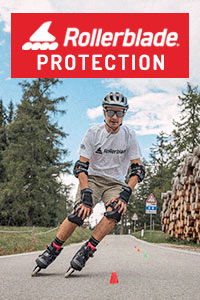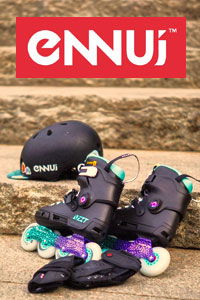Let's get back to beginning of 2000. New, dynamically developing sport of aggressive inline skating is flourishing around the world. A relatively young activity, that in just a few years has made a lot of progress, raising both the level of tricks and skaters themselves together with rapid revolution in the equipment construction. Despite the quite wide selection of goods offered by skate manufacturers back then, the common design of an aggressive skate was still based on composite, closed shell. The technology of skate gear was rather simple with the main focus on bigger soul kits or the slowly appearing after market frames, hyped with the newly introduced UFS standard.
Man and a vision!
The time between 2000-2004 was definitely a specific era for aggressive skating. The trick trends mostly involved very technical grinds with the little focus on rolling around. Unnaturally big soul kits, the peak popularity of freestyle frames and even smaller wheels. Tech skating was pushed to the limits, where everyone wanted to just grind every possible obstacle. More or less around that time, the low-key rollerblading guru Shane Coburn (former team manager and product designer of Universal Skate Design), fascinated by snowboarding, comes with the idea of connecting the skate cuff with a snowboarding binding and a sole in order to create something completely new. The seed is planted in his head and the idea of a game changing design is born. Shane was very aware of the potential of his new idea, yet while waiting for the right moment he centres his attention in finding the right people to team up with.
When Shane was working for Senate he met Dustin Latimer and together started a fresh wheel brand called Medium. Dustin's progressive and inspiring skating style, just as Shane had expected, met with a sensational reception, which instantly translated into great interest in his new endeavour. Coburn did not slow down and for the new millennium he transformed Medium into cult followed Mindgame. The ultimate rollerblading brand which turned our industry upside down. Their first team video “BrainFearGone” became a milestone in every aspect. The bar of skating level was raised so high that even today it's still hard to match. Gained considerable trust of the entire rollerblading community, Shane was then convinced about his idea and thus got the final impulse to start manufacturing his own skate. To the great surprise of everybody, Shane manages to find the support of the winter sports giant — Salomon.
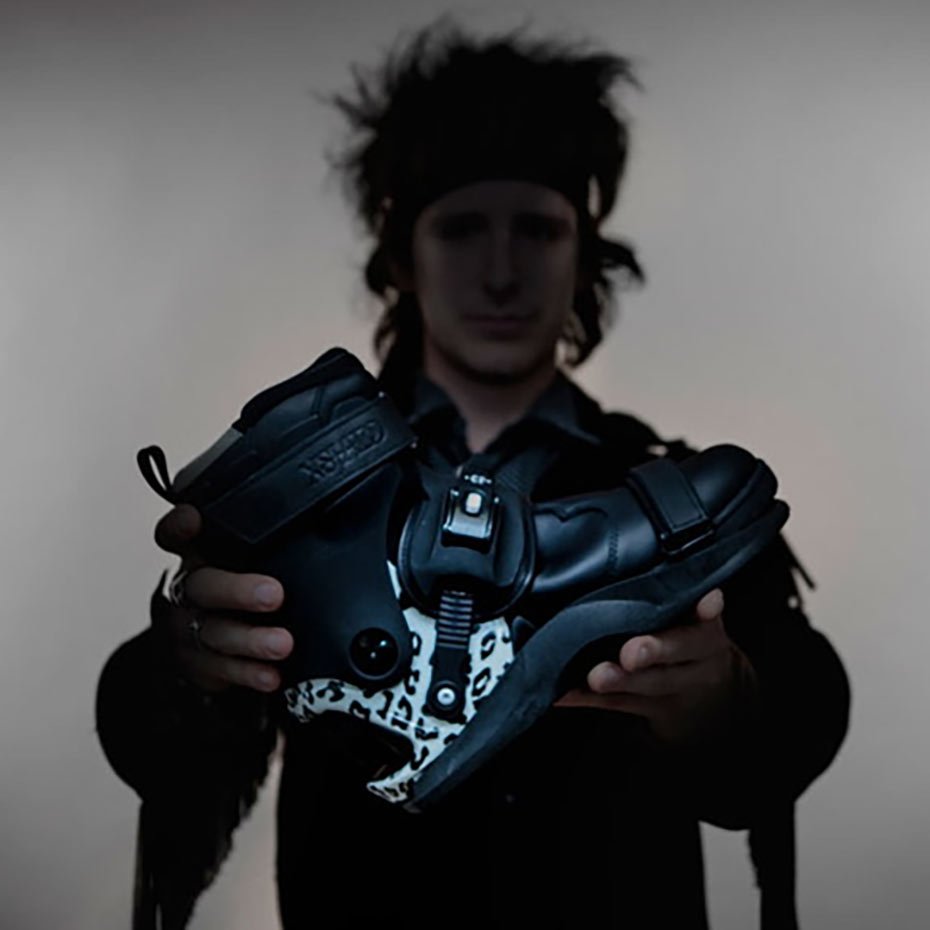
Supported by Salomon
The huge production facilities and the opportunities offered by Salomon made it possible to fully develop the idea of innovative Xsjado project. Together with Dustin Latimer’s blading being generations ahead of its time, Shane Coburn had two solid pillars in his hand, crucial in engineering an inline skating product that provided an all new experience and the only step-in binding style aggressive skate on the market.
The very first Xsjado skate was obviously the signature model of Dustin Latimer and hit the shops in 2004. Presenting the original idea of an aggressive skate based on fully open skeleton and dedicated shoes (called foot wraps) which replaced common liners, Xsjado skates were quite a springboard from the previously accepted skate design. Thanks to Salomon's resources, we received the equipment that, apart from new, practical features, offered high quality workmanship. Perfectly blended with the needs and trick trends of aggressive skaters from that period. Giant soul plates, both on the positive and negative side, perfectly matched the popular freestyle Mook frames (also designed by Shane), allowing performing tricks not only on the rail or a ledge, but literally everywhere.
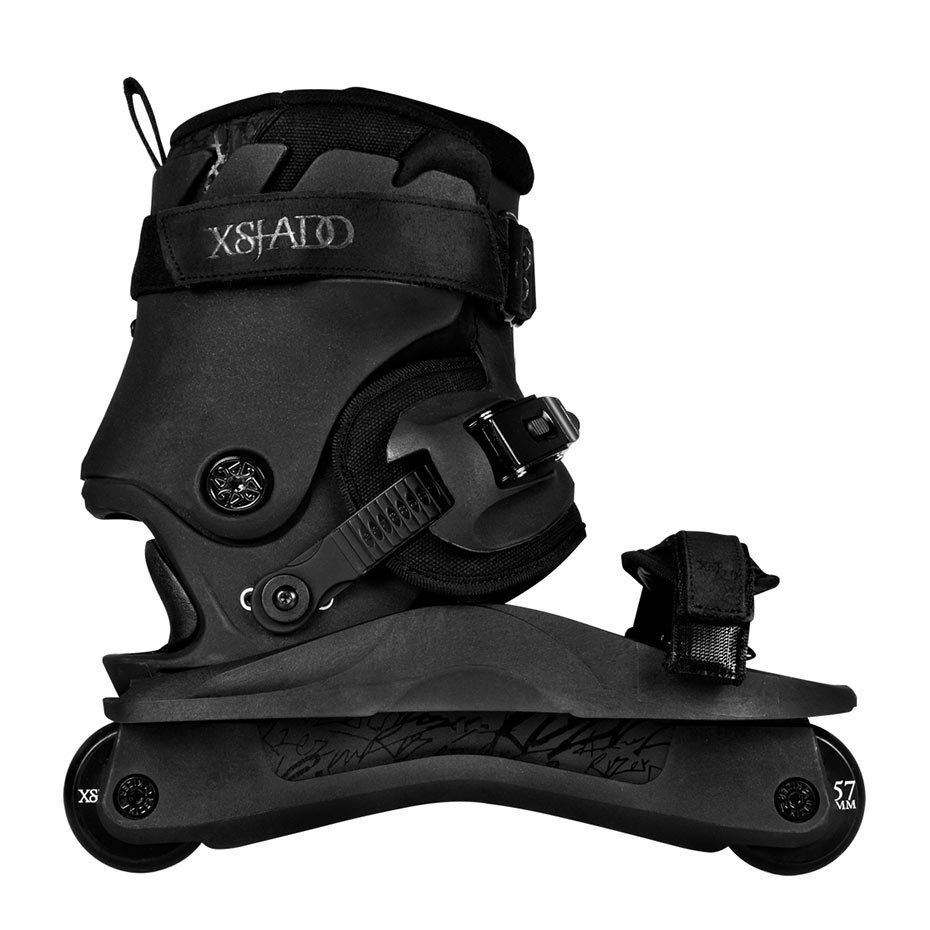
One of a kind
The most obvious difference between the Xsjado skate and a normal skate was that it incorporated a low-soled sneaker. Simply called “foot wraps” they were designed to act like a second layer of a skin for a foot. The foot wrap sat far back into the shell of the skate fitting snugly by means of a moulded outsole.
Once the foot wrap was properly placed inside the shell, the instep cover and strap used to lock the heel in place. This lock was the centre of the Xsjado skate concept and the reason that it performed so much different from other skates. The instep-strap appoints the cross-section of our foot from your instep to you heel as the fulcrum for the leverage from which all action is directed. Since almost every other skate have been using the area just above the ankle for its fulcrum, we can understand why the Xsjado skate had a much more intimate connection with a foot. We could manipulate the skate precisely, rather than it manipulating us. They were a goodbye to “cement block feet” feeling as if it was an extension of our own foot.
The second, important upgrade brought by the premiere Xsjado skate was the cuff. The Xsjado cuff did not have a riveted bolt masquerading as a second ankle. Instead, the petal-like cuff allowed our ankle freedom in any direction, while limiting it from hyper extension. The cuff's design was inspired by the variable tension of bamboo trees which allow them to bend in the wind even to the ground without snapping. Like a bamboo, the Xsjado cuff's slits allow it to bend quite easily at its top, but was firmer and more rooted toward its base, giving far more precise control.
As it was mentioned many times before, even the smartest design could have a hard time to “catch on” without the right way of promotion. Starting the project with such attuned character like Dustin Latimer, Shane was perfectly aware of that but to spread the word even more he soon revealed the extra rooster of Xsjado team. Undergoing a style/clothing transformation at that time Jeff Stockwell fit entirely into the new image of Xsjado and together with extraordinary Chris Farmer who had just left Deshi, began their assault with constant video footage with the new equipment. Who did not want to try Xsjados after watching Killerboots? Known for his smooth and flawless lines, Stockwell effectively encouraged skaters to give Xsjado a try, while Chris Farmer was then very eager to take negative grinds to next level — particular tricks that became much more enjoyable in Xsjado skates.

Time for Powerslide
As the aggressive market declined around 2006, Xsjado skates had a tough time being a smaller brand, that’s when Powerslide stepped in to keep its heritage alive. The German manufacturer was more than capable of continuing the Xsjado project, being already an established player in the industry and owning such respected companies like Kizer or USD. Once again Chris Farmer was chosen as the main face of the brand, yet very quickly the new team was formed including such unique representatives like Ben Schwab, Damien Wilson or finally the crowd favourite Sean Kelso. Powerslide appreciated the innovation and history of Xsjado and tried to keep the brand afloat at all cost so a number of changes have been made to the design.. New foot wraps were much higher while replaceable components, such as the buckle system or the shape of the ankle part itself, underwent gradual modifications. Even though the access to spare parts was significantly improved, the new solutions unfortunately were not always successful. The innovativeness of the first Xsjado models went hand in hand with the excellent quality. After changing the manufacturer, the difference could be felt in virtually every aspect. Anatomically fitted, original foot wraps were replaced with more visually attractive, high-top sneakers, which, however, did not fully harmonize with the accurately designed skeleton. The open construction of Xsjado skate was not so durable and abrasion resistant, which in connection with a huge number of screws, washers, straps etc. significantly reduced their total life span. Xsjado users complained more often for the easily braking cuff material (the big problem especially in EU and skating in lower temperatures in general) which gradually contributed to a decline in interest in the product. Powerslide, however, still firmly believing in Xsjado, presented version 2.0, which was designed to eliminate all flaws of the current model.

Xsjado 2.0 introduced two main updates. One piece cuff from 1.0 version was now replaced with two-piece, movable element with a traditional hinge screw. A large range of forward flex has thus been increased even more making the skate even softer. The complete revision of the rolling feel from the original model dissatisfied most of the brand fans. The second change was the addition of two extra base plate sizes. This, in turn, was a very accurate move, as it made it much easier to adjust the skate to the length of your feet. As additional soul wings were abandoned, the base plate was significantly simplified in terms of construction. Its shape as well as the position of the royale groove has been reinvented based on Chris Farmer's guidance.
Presented upgrades divided the brand enthusiasts, which without a clear direction of development began to fall into the background. The last Xsjado model, named Farewell, appeared on the market in 2017, offering an aggressive version with Kizer Type X frames and a big wheel variant with Kizer Level III frames.

USD Shadow
Lack of interest in skates based on the open skeleton did not discourage Powerslide from another try though. In order to simplify the communication and the marketing, Xsjado skates has become just an unique skate model of USD, receiving a more clear code name — Shadow. Unexpectedly, one of the most appreciated European skaters, Eugen Enin, becomes highly amused by the idea. It turned out that the Xsjado were Eugen's first skates in which he had started his adventure with street skating and did his first rail with them many years ago. The history comes full circle again and thanks to Eugen we get another chance to test the specific properties offered by the unique USD Shadow design.
Brand new USD Shadows, the signature model of Eugen Enin seems to fix all the addressed flaws of its predecessor. In order to reduce the amount of hardware, the classic cuff designed by Shane Coburn is now back and what's more it has completely removed padding. Its role was taken over by the more traditional, high Eclipse liner, which, in order to maintain the spirit of the original, still offers the option of using it as standard footwear. Older fans of the brand will certainly notice the inspiration with the Damien Wilson pro model from 2009, and more specifically the improved version of the so-called ankle flap, again connected to the front toe straps, providing a slightly tighter fit.
The current USD Shadow skates are convincingly a different model than all other boot options, giving a 100% alternative feeling to an average aggressive skate. The third pro model of Eugen can be a great change for everyone who has been using skates of a standard design for years. Clearly lighter, providing unmatched freedom in performing tricks and outstanding user comfort are definite advantages of Shadow skate equipment. „You have the right to evolve”.


